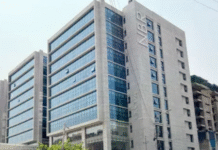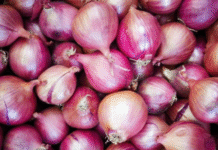
Inflation fell 49 basis points to 5.53 per cent in July compared to a month earlier, led by the fall in food prices.
Buy remeron online
July’s figure is also nine basis points lower than the headline inflation in the same month of the just-concluded fiscal year, data from the Bangladesh Bureau of Statistics (BBS) showed.
Food inflation declined 84 basis points to 5.7 per cent in the first month of the new fiscal year from a month earlier.
Non-food inflation nudged up six basis points to 5.28 per cent.
Two independent sets of commodities (goods and services) are used to compute the consumer price indexes for rural and urban areas. The rural basket covers 318 items while the urban basket consists of 422 commodities.
BBS data showed the prices of all varieties of rice fell in July, partly because of adequate supply and fall in demand owing to the coronavirus pandemic.
Pulses, local varieties of onion garlic and ginger, sugar, salt, eggplants, lady’s finger and papaya also saw a decrease in prices.
The prices of good quality potato went up.
Rural inflation decreased to 5.43 per cent, down 59 basis points from 6.02 per cent in June.
Last month, food inflation in rural areas declined 80 basis points to 5.67 per cent and non-food inflation 20 basis points to 4.98 per cent.
In urban areas, overall inflation went down to 5.72 per cent in July compared with 6.03 per cent in June. Food inflation declined 96 basis points to 5.76 per cent whereas non-food inflation moved up to 5.68 per cent from 5.27 per cent in June.
Headline inflation decreased relative to June primarily due to a significant decrease in food inflation in both rural and urban areas, said Zahid Hussain, a former lead economist of the World Bank’s Dhaka office.
An increase in the price of non-food items in urban areas led to an increase in the non-food inflation, he said.
“The decrease in food inflation may be reflecting the improved functioning of the supply chain with the reopening of the economy. Demand pressure on food items may also have eased following Eid.”
Despite the decrease, food inflation is still high at 5.7 per cent year-on-year.
Rice prices increased in August. Ensuring an adequate supply of essential food items in the local markets will be critical for bringing food inflation down further to ease the sufferings of the poor and vulnerable population, the economist said.
Increase in non-food inflation in urban areas was driven by an increase in transport, pharmaceuticals and furniture, furnishing and household equipment. These resulted from both increases in cost and demand.
“The biggest concern is the acceleration in prices of pharmaceutical products. Inflation in this category is in double digits since April,” Hussain said.
This needs to be looked into in greater detail because it is adding salt to the injuries caused by the health crisis.
The latter may have increased demand for pharmaceuticals, but the government did reduce duties on imported inputs.
“Local market prices are not reflecting these reductions,” Hussain added.
Inflation ended the just-concluded fiscal year at 5.65 per cent, slightly overshooting the government’s target of 5.5 per cent, owing to the dragging supply chain disruption caused by the pandemic-induced shutdown.
Food inflation was 5.56 per cent and non-food inflation 5.85 per cent.
Inflation target for this fiscal year is 5.4 per cent.
Buy priligy online









